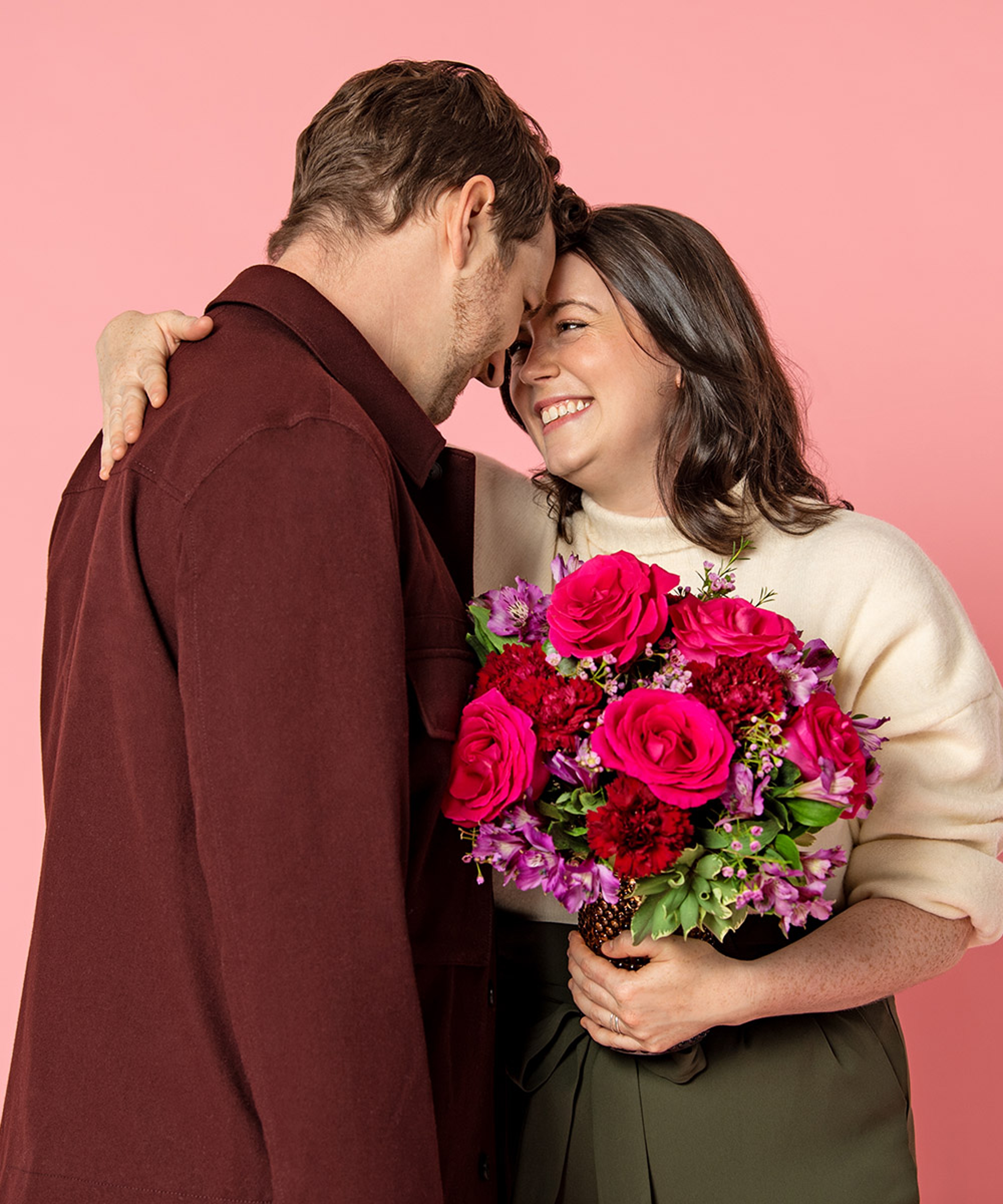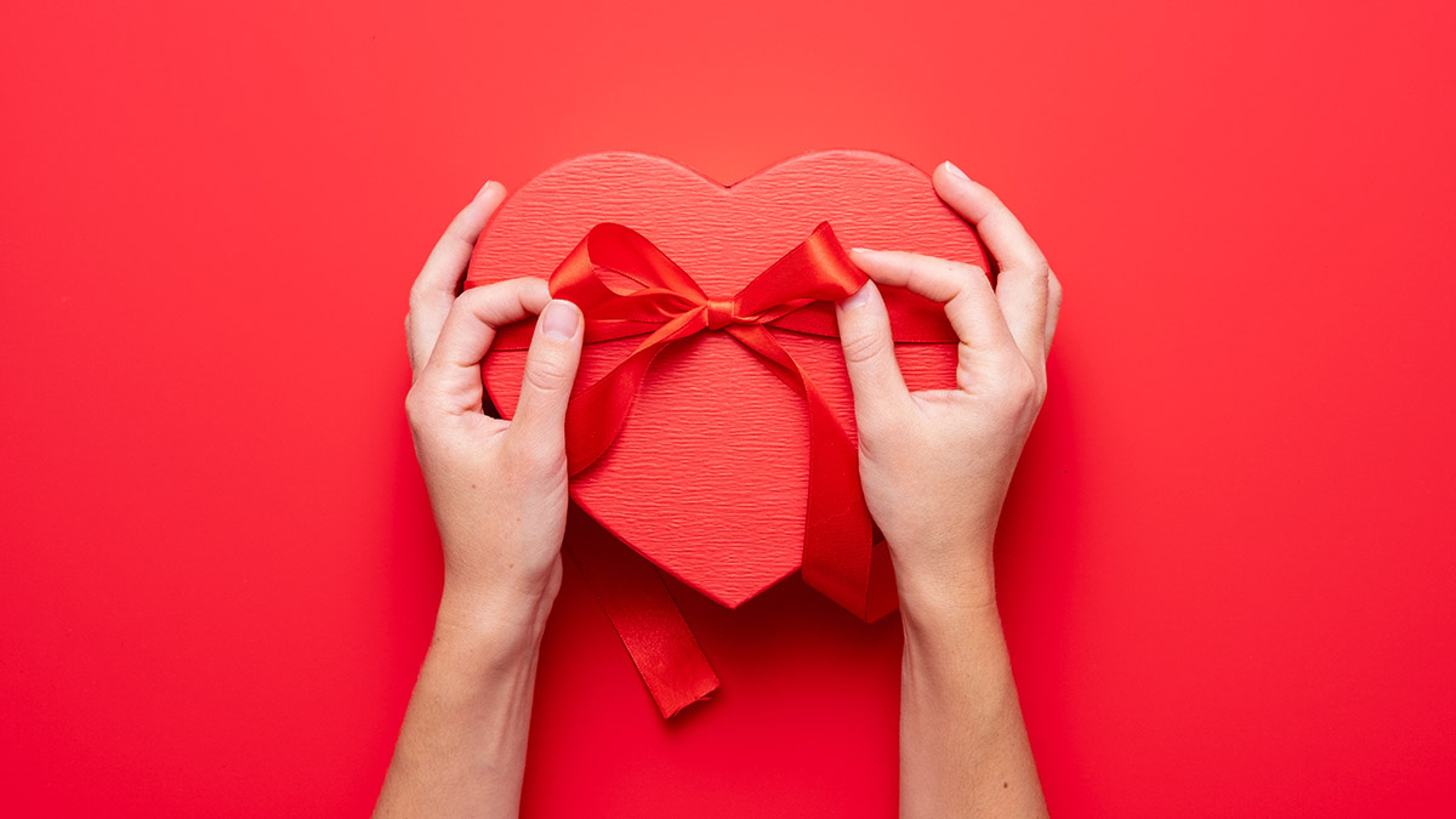Valentine’s Fun Facts & History
From the amount of chocolate that's purchased to the number of cards that are exchanged, these facts will blow your mind.
Jan 28, 2025
The arrival of February is marked by several obvious signs. Store shelves overflow with heart-shaped candies. Everywhere you look, couples passionately embrace on street corners, as love fills the air. And nary a commercial goes by that doesn't feature a stunning piece of jewelry.

February may be synonymous with a handful of events — there's that big football game that is contested during the first week or two of the month — but none is more popular than Valentine's (sorry, leap day). As the most romantic day of the year, our societal fixation on the day of love makes sense — after all, whose heart doesn't beat a little faster when thinking about the one they adore?
The jovial spirit and lovey-dovey passion of Valentine's only account for a fraction of what there is to know about this holiday, however. The financial, historic, religious, and other factors that helped establish this day and continue to power it forward are captivating, and may even reshape your perception of Valentine's.
Whether you are single and ready to mingle or happily coupled up, read on for some fascinating Valentine's facts.
What is the history of Valentine's Day?
Valentine's Day has its roots in a man named Valentine. Or two men. Let's explain.
One origin story tells of a third-century priest named Valentine who lived in Rome. The emperor at the time was Claudius II, who, hoping to make young men better soldiers, outlawed marriage. Valentine, recognizing the unfairness of this decree, secretly continued to marry youthful couples. When his defiance was discovered, he was put to death.
Another features a man named Valentine who was imprisoned and later killed for helping Christians escape captivity in the torturous Roman prisons. This Valentine penned the first Valentine's card when, from jail and before his death, he sent his jailer's daughter, who secretly brought him food, a love letter and signed it “From your Valentine," thus beginning a tradition we embrace to this day.
Valentine's facts by the numbers
The history of Valentine's is one of myth and legend, but the modern-day numbers associated with the holiday are anything but — though they are no less unbelievable. While it comes as no surprise that people exchange a lot of gifts and spend an exorbitant amount of money on Valentine's, the actual figures may just blow your mind.
- Americans spent approximately $25.8 billion (yes, with a “B") on Valentine's-related purchases in 2024. That number is projected to be $27.5 billion in 2025.
- The highest dollar category of Valentine's spending is jewelry, which is expected to account for $6.5 billion in 2025.
- Candy is the most popular Valentine's gift, with 56% of participants planning to buy sweets in 2025.
- Consumers expect to spend $188.81 each on average in 2025, $3 more than the average Valentine’s spending in 2024.
- Americans purchase in the ballpark of 58 million pounds of chocolate for Valentine's.
- Not including classroom valentines, approximately 145 million Valentine's cards are exchanged each year.

Valentine's facts on flowers
No Valentine's is complete without flowers. Whether you are a traditionalist and always opt for a bouquet of red roses or a creative spirit who prefers a unique smattering of unconventional blooms, this is the perfect opportunity to express your personality and affection. No matter what floral route you embrace, one thing is certain — your crush will cherish your token of love.
- Forty percent of people anticipated buying flowers for Valentine's in 2025. The total spend on those flowers was expected to be $2.9 billion.
- Men are far more likely to buy flowers than women — 64% to 36%, respectively.
- Roses are the most popular Valentine's flower, with over 250 million produced exclusively for the holiday each year. Of those who planned to buy flowers for Valentine's 2024, 70% said they'd be buying roses.
What are the most popular flowers to give for Valentine's?
While roses dominate the top spot on the Valentine's flower power rankings, many other beautiful blooms make superb gifts for your special someone. If you are looking for some of the best, most romantic blossoms for your loved one, here's a roundup of some popular holiday picks.
1. Roses
1. Roses
Shop : Two Dozen Red Roses from 1-800-Flowers.com
Classic and elegant, roses are synonymous with love and Valentine's. You cannot go wrong when you opt for roses as a gift on Feb. 14.
Shop : Two Dozen Red Roses from 1-800-Flowers.com
2. Irises
2. Irises
Shop : Bunches of Love Tulip & Iris Bouquet from 1-800-Flowers.com
Alluring due to their unique shape and vibrant hues, irises are as distinct as the bond you share with your special valentine.
Shop : Bunches of Love Tulip & Iris Bouquet from 1-800-Flowers.com
3. Lilies
3. Lilies
Shop : Lovely Lilies Bouquet from 1-800-Flowers.com
With blossoms as grand as your love, lilies make wonderful Valentine's gifts. Choose from several shades to find the ideal color to complement your other gifts and appeal to your better half.
Shop : Lovely Lilies Bouquet from 1-800-Flowers.com
4. Sunflowers
4. Sunflowers
Shop : Warm Sunset Bouquet from 1-800-Flowers.com
Valentine's is the time to express all those sweet feelings you have toward your partner, and what better way to do that than with bright, showy sunflowers? After all, your love brings warmth and joy just like the sun!
Shop : Warm Sunset Bouquet from 1-800-Flowers.com
5. Orchids
5. Orchids
Shop : Exotic Breeze™ Orchids from 1-800-Flowers.com
Unmistakable blossom structures are a hallmark of orchids. Featuring distinctive color patterns, these fun flowers truly stand out from their petaled counterparts.
Shop : Exotic Breeze™ Orchids from 1-800-Flowers.com
6. Tulips
6. Tulips
Shop : Sweetest Love Tulips from 1-800-Flowers.com
Bright and inherently festive, tulips bring a lively pop of color to any occasion, especially one proclaiming love.
Shop : Sweetest Love Tulips from 1-800-Flowers.com
7. Daisies
7. Daisies
Shop : Fields of Europe® Romance Bouquet from 1-800-Flowers.com
Daisies, with their petals spread wide like they are waiting for an embrace, are both delicate and charming. Classic white blooms are most common, but you can grace your Valentine's bouquet with a variety of colors.
Shop : Fields of Europe® Romance Bouquet from 1-800-Flowers.com
8. Gardenias
8. Gardenias
Shop : Blooming Gardenia Plant in Basket from 1-800-Flowers.com
Fragrant to the nose and exquisite to the eye, gardenia blooms, and their deeply rich accompanying foliage, can fill a room just as they fill a heart.
Shop : Blooming Gardenia Plant in Basket from 1-800-Flowers.com
9. Lavender
9. Lavender
Shop : Lavender Door Décor from 1-800-Flowers.com
Lavender is known for its alluring scent and healing properties, and it also has the benefit of being incredibly gorgeous.
Shop : Lavender Door Décor from 1-800-Flowers.com
10. Hydrangeas
10. Hydrangeas
Shop : Blissful Blooming Hydrangea from 1-800-Flowers.com
Like giant puffs of joy, hydrangeas bloom in round groups, making them full and impressive. They also come in a wide variety of colors, giving you several ways to suit your valentine's preferences.
Shop : Blissful Blooming Hydrangea from 1-800-Flowers.com




















